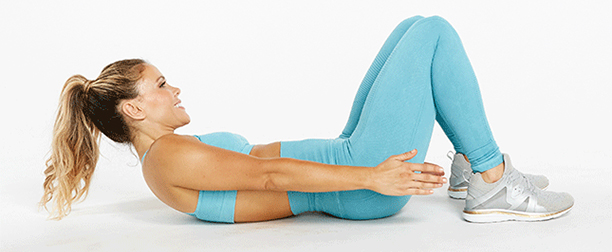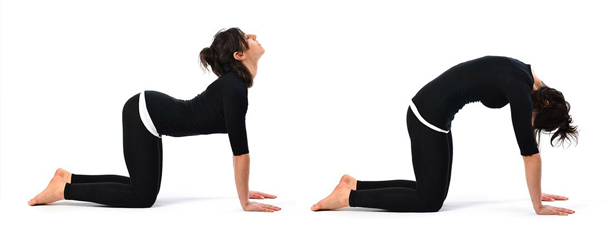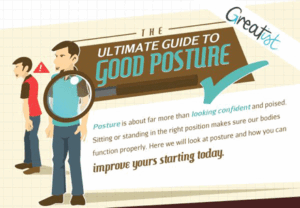6 Stretches to Reduce Back Pain
6 Stretches to Reduce Back Pain
At some point or another, we all have experienced some form of back pain. As I have explained in some of my previous posts, the degree or level of pain that is experienced is subjective to the individual based solely on their own neuro-signature. Simply put, no two people can experience the same quality of pain. That said, from a global perspective on back pain, many who have pain, often feel like they are forever vulnerable to it, once it has happened. This is not the case. In order to #trainthebrain to understand messages received from the low back we must slowly introduce what are called graded exposure exercises to re-educate the brain. When someone initially hurts their back (acute trauma), the typical reaction is to guard and splint the area to avoid any further damage. This may seem like a great survival mechanism, but research has proven that lack of movement to an injured area will prolong the recovery process. The implementation of a backcare plan that consists of controlled, measured movements will assuredly allow you to return to full function in a shorter period of time than weeks of bed rest. Here are 6 simple movements that you should consider doing on a weekly basis to both alleviate and avoid future back issues.

Partial Crunch - Pelvic Tilt Exercise for Back Pain
How to do a Partial Crunch:
• Lie on your back with knees bent and feet flat on the floor.
• As you exhale, contract your abdominal muscles and press the small of your back into the floor.
• Lift your head and shoulders slightly up off the floor as you reach toward your feet with your fingertips.
• Hold for 5 to 10 seconds.
• Relax and return to the starting position.
• Repeat 5 to 10 times.

Cat-Cow Stretch for Back Pain
This simple stretch, sometimes called the cat-cow stretch, gently stretches the muscles of the low back and helps realign the spine and pelvis. It's particularly helpful to ease the pain of a low back strain. Here's how to do it correctly.
How to Do the Cat-Cow Stretch
• Begin on your hands and knees.
• Contract your abdominal muscles. (Try to pull your belly button toward your spine.)
• Slowly round your back, pushing it up toward the ceiling.
• Allow your head to drop forward and curl your pelvis under.
• Hold for 10 seconds. You should feel a gentle stretch in your back.
• Return to the starting position.
• Raise your head up and let your pelvis fall forward as your belly reaches down toward the floor.
• Hold the position for 10 seconds, then return to the starting position.
• Repeat about 5 to 10 times.

Prone Back Extension for Back pain
The prone back extension is a slightly more advanced and intense back stretch. Here's how to safely perform it.
How to Do the Prone Back Extension
• Begin in a face-down position on the floor.
• Slowly lift your torso up; place your elbows under your shoulders and your hands firmly on the ground. Your lower back will be slightly arched.
• Push into the ground and slowly straighten your elbows to increase the extension in your lower back. Go only as far as comfortable, and stop if you experience any pain. You should feel a comfortable, gentle stretch.
• Hold the position for 15 seconds.
• Return to the starting position.
• Repeat 5 to 8 times.

Hip Opener and Lower Back Stretch
How to Do the Hip Opener and Lower Back Stretch
• Begin in a forward lunge position, and drop your left knee to the ground.
• Place your right elbow on the inside of your right knee (not pictured).
• Press your right elbow gently into your right knee and twist your torso to the left.
• Reach your left arm behind you until you feel a gentle stretch in your lower back and right groin.
• Hold the stretch for about 20 to 30 seconds. Release and repeat on the other leg.
You can modify this stretch based on your own anatomy, flexibility, and limitations. Be sure to keep your forward knee over or behind your ankle, not in front of it.

Spinal Twist Stretch for Back Pain
The spinal twist stretch should be done carefully and slowly. In order to avoid overstretching, never force your knees to the ground. Allow your knees to fall only as far as comfortable. Over time you will naturally increase your range of motion in this stretch. Here's how to safely perform the spinal twist stretch.
How to Do the Spinal Twist Stretch
• Lie on your back with your knees bent and feet flat on the floor.
• Slowly let your knees fall toward the floor until a gentle stretch is felt in your spine.
• Hold for 10 seconds and return to the starting position.
• Next, allow your knees to slowly fall to the other side until a gentle stretch is felt.
• Hold for 10 seconds and return to the starting position.
• Repeat several times on each side.
Knees to Chest Stretch for Back Pain
Bringing both knees into the chest is a simple way to release tension in the back and gently stretch the hamstrings. This simple spinal flexion movement is a great way to end a back stretching routine or workout.
How to Do the Knees to Chest Back Flexion Stretch
• Lie on your back with your knees bent and feet flat on the floor.
• Slowly bring your knees toward your chest and gently grasp your legs just below the kneecap.
• Hold this position for 20 seconds and return to the starting position.
• Rest a few seconds and repeat the stretch several times.
Ready to #feelbetter?
You're just a click away from a wicked good massage!
-

60 Minute Massage Gift Card
$170.00 Add to cart -

90 Minute Massage Gift Card
$255.00 Add to cart -

Mini Aer Small Room Air Purifier
$149.00 Add to cart -
Sale!

Thera-Pearl Sports Pack/Hot Cold
Original price was: $14.99.$12.99Current price is: $12.99. Add to cart -

3 Somadome Sessions Gift Card
$135.00 Add to cart -

TheraBand CLX Connective Loop
$14.99 Select options -

6 Somadome Sessions Gift Card
$270.00 Add to cart -
Sale!

Biofreeze
Original price was: $14.99.$12.99Current price is: $12.99. Add to cart
Passion Mountain
I was at an event recently and was asked by somebody how I could STILL be so passionate for what I do. He said, “What I mean is that you talk about what you do with the passion of child flipping through a new pack of baseball cards. I wish I was that passionate about…
Read MoreFish You Should Scale Back On
New Englander’s love their seafood and we deepen our love affair every summer when our favorite crustaceans, ‘lobstah’ is a plentiful. But what is the best seafood for us and what are the ones that we should be staying away from regardless of how yummy they may be? Monterey Bay Aquarium has combined data from…
Read MoreSports are a Great Metaphor
It’s no secret that my life has always revolved around athletics. From my early days playing pop warner football, through my college years of lacrosse and on into the various community leagues since, being part of a team has always been where I feel most comfortable. What I enjoy most about being part of a…
Read MoreWhat is an Expert?
“An expert is someone widely recognized as a reliable source of technique or skill whose faculty for judging or deciding rightly, justly, or wisely is accorded authority and status by their peers or the public in a specific well-distinguished domain.” – Wikipedia This past month I flew to Atlanta to present a few classes in…
Read MoreThe Power of a Hug
Originally Posted 5/1/2014; following the 1 year anniversary of the Boston Marathon Bombings and our mission to rebound after these horrible attacks on our city. We helped orchestrate the ‘One Run for Boston’; a 3328.2 NON-STOP running relay from LA to Boston, raising over $500K for the victims and survivors of the events of 4/20/2013.…
Read MoreTips from the Table
Without fail, every marathon season, I am asked by my patients, what kind of advice I would offer up to them as they prepare to run the Boston marathon. I first admit that I have never (nor will ever) run a marathon, but given my unique insight of spending 1000’s of hours alone in a…
Read MoreShoulder Impingement
The glenohumeral joint is a highly complex articulation. It has the greatest range of motion of any joint in the body. However, its increased motion occurs at the expense of stability, requiring the soft tissues to play a more critical role in maintaining joint integrity. As a result of increased mechanical demands, numerous soft-tissue injuries…
Read MoreTrain, train, train. Train of fools.
In my seventeen years as a massage therapist, I am still amazed by some of the things I see in my office. Being situated 1/10th of a mile from the finish line of one of the most prestigious marathons in the world, the Boston Marathon, we see more than our fair share of runners coming…
Read MoreAchilles Tendon Disorder
Achilles Tendon Disorder Massage therapists see many clients with active lifestyles. Running, jumping, dancing, climbing, or any number of other activities can put serious stress on the Achilles tendon (AT). AT disorders also can contribute to biomechanical disorders in the foot and lower extremity. That is why it is important for the massage practitioner to…
Read More



